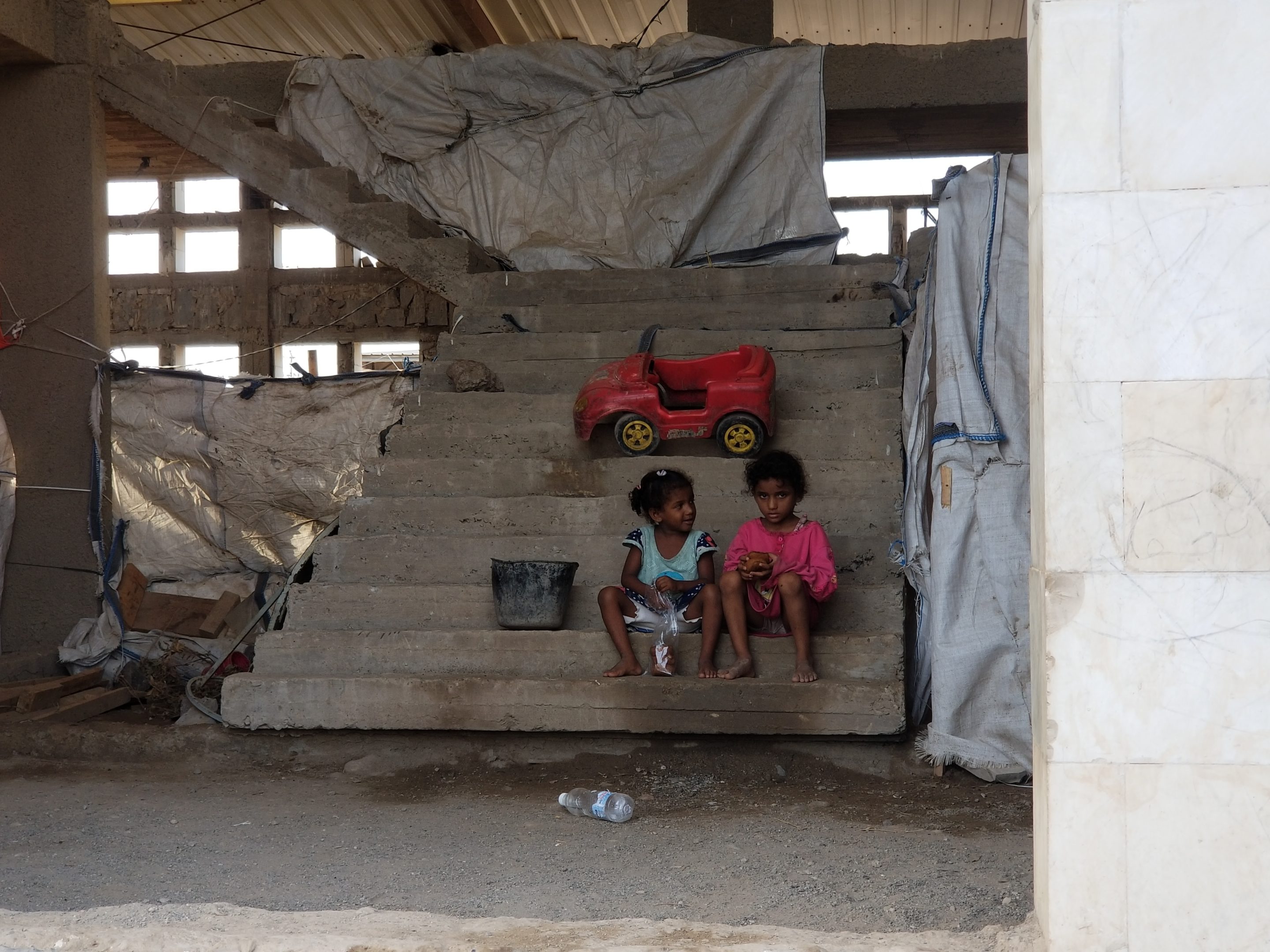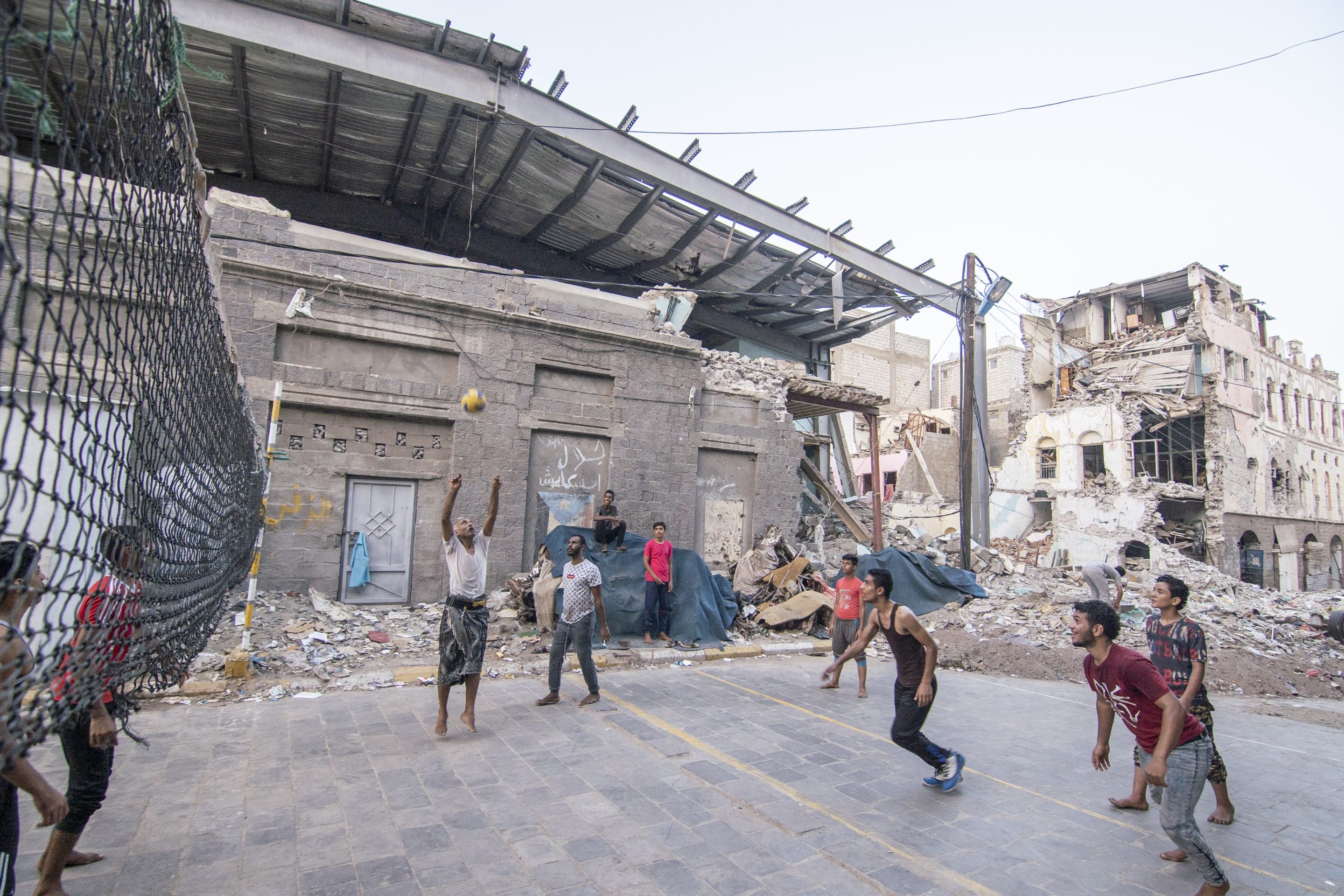
Two displaced girls sit on the steps at a hosting site in Aden. ©UNHCR/Mohammed Mukhawesh
By Jean-Nicolas Beuze, UNHCR Yemen Representative
I am the new UNHCR Representative in Yemen, writing this from our base in Sana’a, Yemen’s capital city at the foot of Mount Nuqum in the western part of the country.
I was last here in 2013 during what became a very short-lived peace and reconciliation process. Since then, followed by the renewed fighting in 2015, the country has spiralled into what the UN has called “the world’s worst humanitarian crisis.”
That term is not hyperbole. By the numbers it translates into a country where 80 per cent of the population — 28 million — is in need of humanitarian assistance.
Imagine a place where most children and families are struggling every day to find food and water. A while back, you may have seen heart-wrenching photos of desperately hungry and severely malnourished Yemeni children. Many are lucky to receive one meal a day and a little potable water.
In 2019, approximately 3.2 million Yemenis required treatment for acute malnutrition; that included two million children under five, and more than one million pregnant and lactating women. This makes them more vulnerable to disease, of which cholera is now rampant. Last year the World Health Organization reported almost one million suspected cholera cases in Yemen.

Group of Yemenis and displaced people play in a playground amidst the destruction in Aden. ©UNHCR/Saleh Bahulais
Children cannot be vaccinated anymore. The line of the conflict changes all the time. There are bombings. There are not enough supplies. We don’t have access to the population because of the constant insecurity. There is also no money, for example, to buy and distribute vaccines, or for schools, or shelter. People have no jobs. It’s really a situation where everyone is in survival mode.
Despite this, my colleagues on the ground tell me about Yemenis’ resilience. I saw this in 2013 and I know I will witness it again.
Close to 3.5 million have been displaced from their homes by the fighting. They remain displaced within Yemen — where else could they go, anyway?
What has surprised me most, and perhaps saddened me most, is that every month, more than 10,000 Ethiopians and Somalians, amongst others, make the perilous journey to Yemen seeking help and protection. What does it say about the state of our world when refugees and migrants see a country like Yemen, already impoverished and now in the midst of a five-year conflict, as a solution to their own plight at home?
It has only been a few short months since I left my post with UNHCR in Canada. Despite the physical, cultural and economic distance from many humanitarian emergencies, the UNHCR Canada team and Canadian people continue to strive for a better world.
“Despite this, my colleagues on the ground tell me about Yemenis’ resilience. I saw this in 2013 and I know I will witness it again.”
It is up to us to tell the world what is happening in Yemen. I was shocked to learn that in the Syrian crisis, the international ask for humanitarian aid was the equivalent of $2.6 billion dollars a year. The international ask for Yemen is half of that at $1.7 billion per year. Humanitarian assistance should never be a competition, but some emergencies fall off the radar. I believe that Yemen is one of them.
UNHCR has a team of over 200 dedicated staff here in Yemen, working to save and protect people. UNHCR and its partners are working around the clock to provide water, food, shelter, medicine and protection for vulnerable, often traumatized people. We need your commitment and voice more than ever to inform and educate more Canadians about the humanitarian emergency in Yemen.


